Gone too soon. I could hardly believe the news when I saw it. Rare to find someone so admired in the industry. I have had this conversation with Ric tucked away in the files, that I was going to add to the occasional series on “Selling wine in New Zealand” that we’re up to Part 7 of now. And like too often on WineFolio, I’d thought ‘I’ll put that one up next week’ only for next week to come and go. If Ric’s sudden passing shows me anything, it is that I can’t put things off til tomorrow. RIP.
I start off asking about his aspirations as a person working in the wine industry. Does having to hit targets and set margins take some of the romance, and joy, out of wine?
Ric Little: I think there’s a happy medium. I don’t think you can be successful – properly successful – in this industry unless you like the product. If you’re in it for the sale – go and sell toilet paper or cat food. I get a kick out of a great sale, but also out of a great glass of wine. That’s what motivates me. The reason I got into this game was that I wanted to help people tell their story. And the best way to tell a winery’s story is to drink it. But you’ve got to get it in front of people, and therefore put it in danger of being sold! Otherwise you can make the best wine in the world, and if you don’t have a route to market, no-one’s just going to discover it by chance.
This is an incredibly diverse and competitive field. Compared to other industries, it is fairly poorly paid, so if you don’t love it, go and sell Coca Cola. There’s a lot of people who have moved into this industry from those other FMCG industries, thinking a sale is a sale – and have destroyed the businesses they’ve worked for. If you’re going to be a successful wine business, you have to have ‘wine intelligence’ in your business.
The tightrope you walk as a distributor is managing people’s expectations – on both sides. And as the distributor we are very much the meat in the sandwich. The winery wants the sale, and the customer wants the product. But often the way that the customer wants to make the sale, and the way that the winery would like that sale to be made, are diametrically opposed. A retailer might want to purely focus on being the cheapest in market, whereas if you’re a premium brand like a couple of ours – Kumeu River or Craggy Range – you don’t want your product marketed in that way. You want it marketed on the quality and prestige of the product, not around the price. You’ll get premium retailers in New Zealand whose lead out is “Was $70, now $50” and it immediately degrades the product.
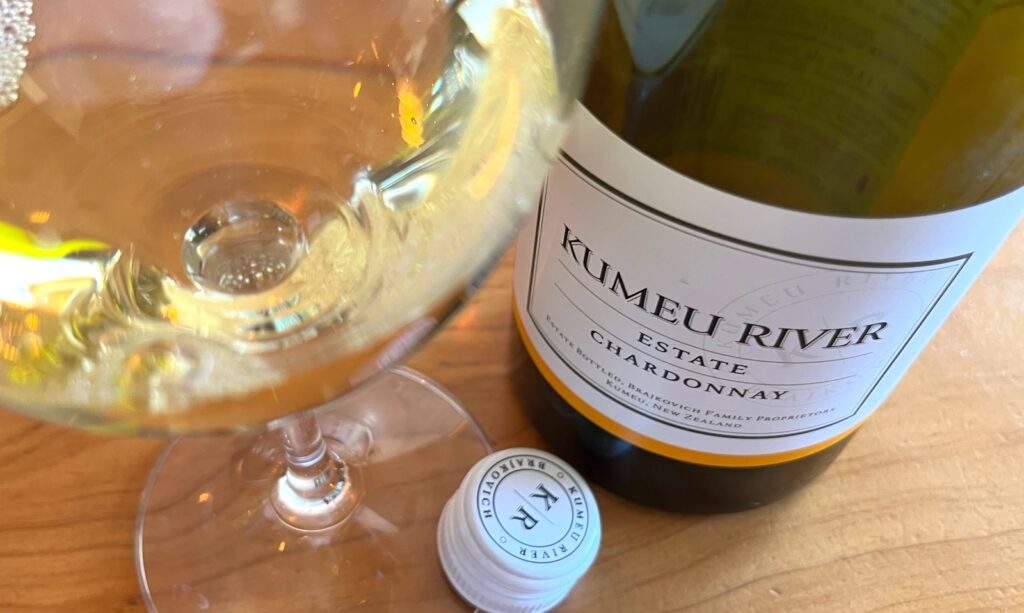
The number of people who drink at the very top level, in this market, is so miniscule – compared to the market per se. We have to try and sell to all 5 million New Zealanders, and there’s probably only 50,000 who understand that a Kumeu River Mate’s Chardonnay – on a global scale – is amazingly good value. They just see a $90 wine and go “are you freaking crazy?”
WineFolio: So how do you segment that up – to a supermarket consumer who immediately looks down at the bottom shelf, to someone who does want to go to a fine wine store and be seduced by something?
RL: If you’re genuinely a wine consumer, then you are quite occasion-specific about your drinking. But that means you buy right across the spectrum. I’ll buy En primeur Bordeaux – $300 is about my limit – and I’ll have a budget in mind that I’ll spend on that campaign each year, if the wines are good enough.
WF: A weird thing for me, is I don’t drink that much – and with constantly reviewing wines, I’m often only opening about two dozen wines that I’ve chosen to buy and then drink – in a year!
RL: If those twenty four bottles were Bilancia Single Vineyard Chardonnays or Craggy Prestige, or whatever, though? If I’m paying the wage bill around here, then I need Karen going into Pak n’ Save Royal Oak and buying six bottles of $15 Sauvignon Blanc a week, or this business doesn’t work. Because if we relied on the wine lover – like yourself – we’d be broke. Something like Taittinger Vintage Champagne – we’ve really tried to light a fire under it, and we can’t. People just don’t get it.
WF: And did I read that Maté Brajkovich had something to do with the history of Vintners?
RL: The history of this company probably follows the history of wine licensing in New Zealand. If you wanted to sell wine in New Zealand back in the day, you had to have a winemaker’s license. You could only sell wine if you were a winemaker. Maté had a few mates – Ross Woolley who set up Thornton Accountants and several other Business to Business colleagues, who just wanted to have access to and drink some imported wine. And because they had the winemaking license they were allowed to import, and struck up some relationships with companies like Chateau de Beaucastel, Taittinger, Rocca della Marche and Umani Ronchi in the late ‘70s.
So they were bringing in some wine for their own consumption effectively. And after they’d been doing that for a year or two they thought “hang on, this is an expensive and compliant-heavy way of doing it”. So they thought to bring in larger amounts and put someone on the road, selling what they’re not drinking and fund the ‘habit’. That’s how Kitchener Wines was founded. Named after the small warehouse they set up in Kitchener Street in Parnell. It grew and grew as they started to bring in more wines, and got in with the Farouk brothers who had Chin Chin and Harbourside restaurants – and the import license for Illy Coffee. Now you never give a restauranteur a warehouse full of wine and an order book!
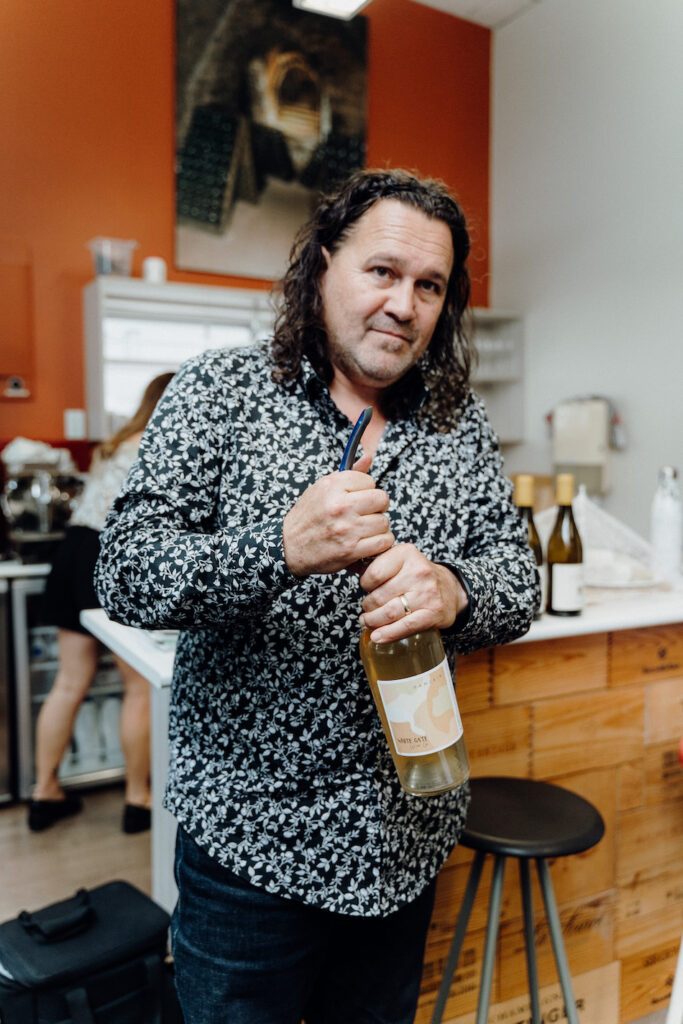
They changed the name as it was no longer just a wine business – to Concerto Merchants, and started to include olive oil, tomatoes, sauces, pasta confectionery – even cigars! And the Brajkovich family ended up looking at the business that used be about wine, but was by now a bit unwieldy – and they brought in a gentleman by the name of Phillip Shepherd – who had helped set up Negociants and Hancocks distribution networks. He had a lot of contacts in the on-license world and knew how the structure of distribution was supposed to work.
The first thing he suggested was breaking it into three separate companies. So there was a wine business, a coffee business, and a business with all the food products and everything else on the other side. At that point he called a guy called Mark Young, who he knew from Hancocks – and he and I met in 1999, when I was working for Villa Maria and he was the buyer for Glengarry. The two of them had always had the aspiration of owning their own wine distribution business, so they offered to buy the wine business off Concerto – and Vintners was born, in 2001.
The day they started the business they rang me and asked if I wanted to join them, and I said No – as I’d just moved into a management position at Villa Maria. I was only three and a half years into the industry at that time and felt I still had too much to learn. Things were starting to change though and I could see the writing on the wall, so I told them to give me a call in six months. I had got out my diary and written in it ‘Mark Young’ six months down the line – and on that day he called me. He said “You ready to come to the dark side yet?”
I was actually working on a project for George at the time, and although I accepted the role I stayed at Villa for another three and a half months to finish it. I knew I was going to be an industry lifer at that point and didn’t want to burn any bridges. George read my resignation letter and said to me “At least you’re keeping it in the family” and we’ve remained friends ever since. I came on board as the sole person who looked after accounts from Taupo to Cape Reinga. At that stage several of our now biggest customers – like Countdown – we didn’t have accounts with. We’ve come a long way but we’re still a really small team.
WF: I often hear people talk about the NZ Wine industry moving in different speeds and at different sizes – is that the same with distribution?
RL: It is and it isn’t. There are a lot of distributors that are owned by wine companies. There’s obviously Pernod Ricard who are No.1 – about 30% market share by volume. It is unusual on a global scale for one player to have such a big chunk. Then Lion got involved, and purchased Wither Hills, and they’re now the second largest. Then there’s Constellation Wines who are a huge global player, and not so big in New Zealand. Combined, those three are half the market, by volume. If you had to rank us on size, we’re probably around 18th to 20th.
WF: And there do seem to be more and more distributors popping up. It just seems to be an expanding game.
RL: We have to manage our brands – for example, if someone wants to buy Matés Chardonnay off us but they’re not supporting any other Kumeu River product, and there’s another customer who is supporting right across the portfolio – then who are we more likely to sell it to? And we sell out in 48 hours. Craggy Range prestige is the same. The Millton Clos St Anne wines. The single vineyard wines out of Escarpment. We have about five or six premium-release windows per year, from May through to October. Every month we’ll designate a specific wine and launch that. We might have 600 bottles of that and I’ll look at who sold them the previous year, leaving a little buffer for new customers. It’s the fairest way that you can.
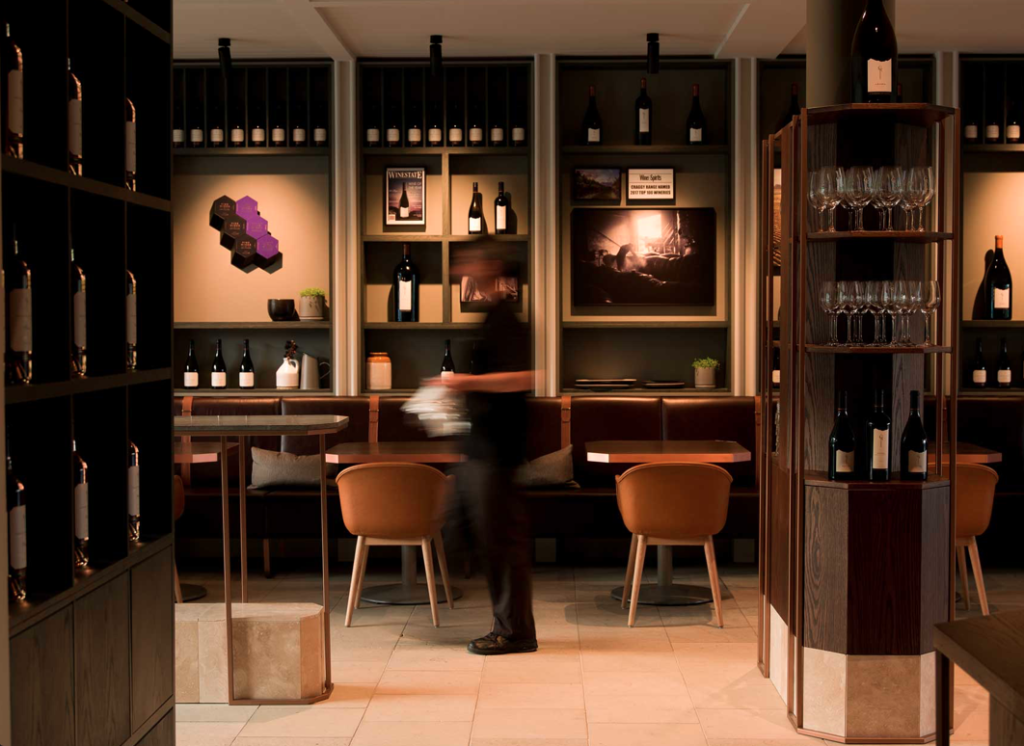
WF: Are specialist fine-wine retailers doing OK?
RL: Well, there’s a huge amount of consolidation. This week was the Liquorland Conference, and they revisited a slide that they put up at the 2017 Conference. They had a stated goal, projected up in front of all the current 82 franchisees and the suppliers. And they said “by 2022 we are going to double our store footprint and be a half a billion dollar business”. This Wednesday they pulled up that slide, and then they pulled up where they are. And they’ve got 162 stores, and 494 million dollars of turnover. They have compulsory and core range wines that they have to have on the shelf, and there’s so many. It’s something like 320 SKUs, and every store has to stock those.
With Liquorland’s online platform – historically the IT was pretty clunky. So if you wanted to buy online from a Liquorland store, you had to select your region, then your store. And what would populate the screen was what was available in that store. That was such a pinch point for consumers. But they are now working on is that if a Liquorland store anywhere in the network has a wine, and no matter where you are, you are able to buy it. The New World system is still like that – you have to select your store, and that’s the flaw with the franchise model you see. Whereas Countdown or Glengarry are all owned and are ranged as per what the Head Office tells them to range. So therefore you can shop at a store and be sure that you are going to get that range.
The way that the Glengarry website was supposed to work, was that the website is a virtual showroom. Technically if you jump on there will be a certain number of our products that are ranged in their stores, and they’ll show availability. They might all have Bilancia Syrah and Chardonnay, but not all of them will have La Collina, and maybe none of them will have Tiratore Chardonnay. But on the Bilancia brand page on their website, you should be able to order Tiratore Chardonnay and we receive the order – and it looks like you’ve placed the order with Glengarry, but it comes from here, on a Glengarry-generated courier ticket. So a seamless experience for you as the consumer. That does require an exceptional amount of computing power and algorithims to work properly.
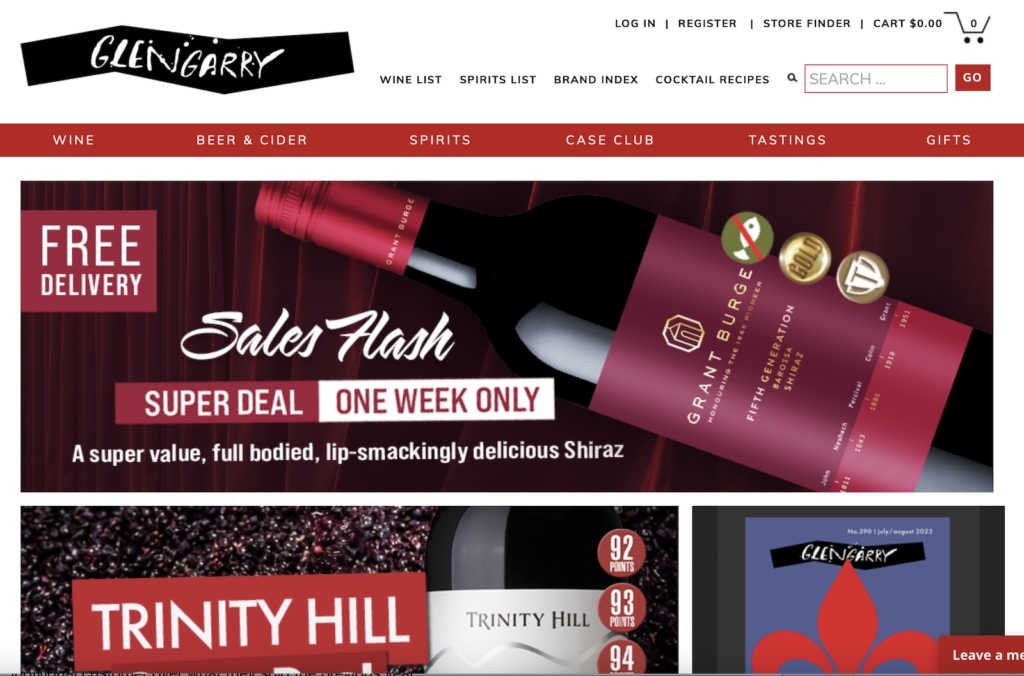
WF: Do you have to predict these types of things, and be ahead of them – for your business?
RL: Not only do we have to be across what retail and on-license wine experiences are going to look like in two or three years time, but it is what are people going to be drinking. The primary role we play for the wineries that we represent, is to do the messy stuff for them. Sell their product, collect their money and pay them. And some distributors, who we call box-movers, purely do that. They buy the wine off whoever, put a margin on it, and they go out there and sell it. It’s very transactional.
We’re much more involved. The basis of this business – because we’re family-owned – we only work with family-owned wineries. We are their eyes and ears. We interact with them on a daily basis. I can speak to someone like Paul Braijkovich three times a day. The culture of this business is that we’re part of their team. It’s not an ‘us and them’ scenario. That was one of the things that attracted me to this business. When I worked at Villa Maria, you felt like you were personally working for George, and that you were part of his dream. One of the main motivating factors for me leaving was that there was another tier of humans coming in between me and my relationship with him, as the company expanded. I’ve always worked for businesses where i can always walk into the owner’s office and say “Hey – what about this”.
WF: How big is your team here?
RL: We’re twenty in total including our own warehouse. About half of us are in the frontline and about half of us are behind the scenes.
WF: What sort of people do you look for?
RL: Ideally, it’s all about their personal approach to life. If they’re a motivated and engaging human being who wants to get something out of life, then they’re going to be successful at whatever they try and do. We quite often like people who have had previous experience in the industry, because the people who are good at it are very like-minded people. Our job is to go out and engage with our customers.
We just had a position come up in Wellington, and had an English guy who was emigrating here who had this really interesting background. He’d been a Press Secretary for a Tory MP, a lobbyist in Westminster and all of these kinds of things. And he actually put on his CV that he’d been a grave digger. Mark and I got all the CVs because we run our own recruitment process as we’re very specific about the people we want. I would have seen in excess of 3000 CVs in my life, and Mark said “Have you ever seen anybody put grave digger on their CV?” And I said “Dude, I want to interview this guy” just because I was intrigued by it and he had the balls to write that on his CV.
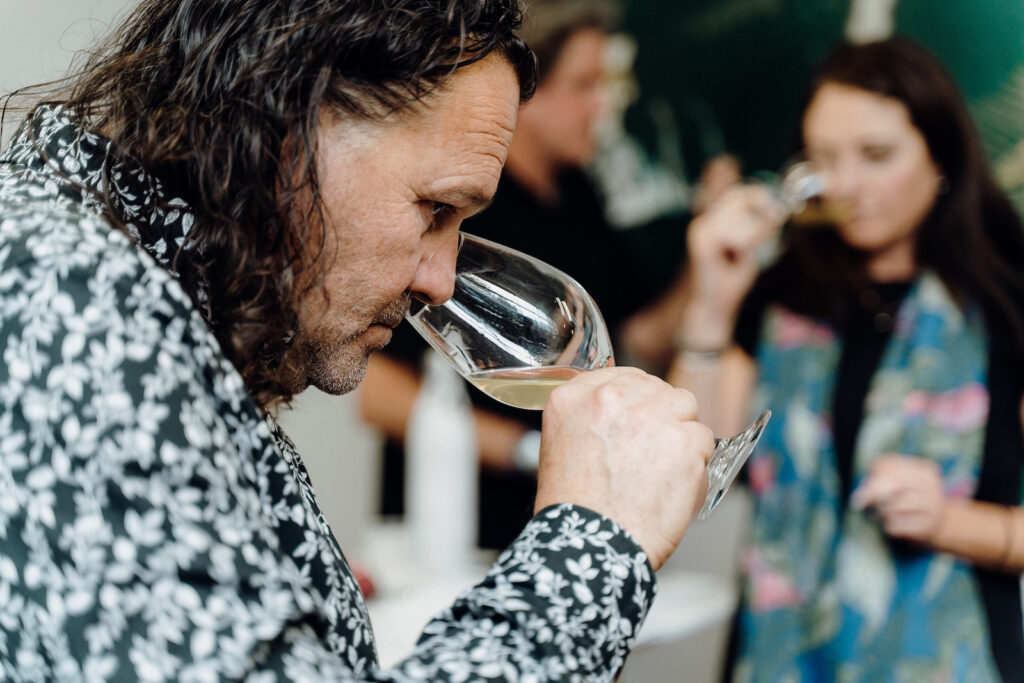
We like people to ‘bring themselves’ to the role because we’ve been at this game for so long that it is nice to have fresh sets of eyes come in every now and then. Particularly in our non-frontline roles. So, our accounts people, product managers and warehouse people, because we like people to have questions about why we do things. You’ll go out and talk to a restaurant in K Road now and the person you’re talking to is 22 years old. And apart from a love for the product, that guy and me have nothing much in common. So I have to make sure that I’ve got someone in my team who is more of their way of thinking. I’ll still call on some of the old guys – like Kingsley!
WF: I interviewed him as part of the series, about selling wine in New Zealand. And it’s funny – he’s almost from another era, but he genuinely is – an influencer. And I don’t mean that he’s making Tik Tok videos and tossing his hair around. And he’d probably not understand what I’d mean by that, but he is the definition of an influencer. He’s a cult figure.
RL: His customers would follow his recommendations to the letter. Which is great, because it is real market niche that only he caters to. Like Kohimarama Wines and Spirits, owned by a guy called James McGuigan, who was a 55-year old white guy when I met him. And he knew all the locals by name and he had his network and did a great job. And all of us were really worried when he sold it – regardless of who he sold it to – that that whole neighbourhood feel was going to disappear. Fortunately Manesh who bought it and converted it to Liquorland, had James stay on and work with him for the first four months. And Manesh really took on that ethos of getting to know his customers personally. And it has gone from strength to strength, it’s amazing.
There has been a consolidation but a proliferation at the same time. It’s going to get harder for the little guys when they’re entering the market because there’s lots of non-specific barriers to entry, just by the fact that the customer base is consolidating. So if you can’t supply all of Liquorland, then you may as well not try. They will select a product and do one range review per year. They expect you to hold your price on that product, and have continuity of supply for a twelve month period. If you can’t tick those boxes, then you can’t play. And it has a way of exploiting people and self-perpetuating the big guys as well. But if you understand how it works, you can definitely get it to your advantage.
WF: We sometimes ask people about their successes, but I like to ask people about the one thing that they wouldn’t do again… anything?
RL: We had a brand in the portfolio, and I don’t mind saying what it was – it was Mud House. And when we started working with them back in 2003, our first allocation was 1500 nine-litre cases, so 1500 dozen. We peaked about thirteen years later at about 160,000 – and that made them so visible that an Australian gentleman who had run a company called Fine Wine Partners, but was then co-opted to go and work for Accolade Wines, visited New Zealand with a shopping list and just saw this thing everywhere. And he thought ‘What is this thing – who does this thing?’ because it was everywhere.
Now, this was 2013, and they were the official supplier to Team New Zealand and the event was happening in San Francisco. The guys who were running the business came to me and said we want to do an incentive for our customers to really drive this thing along. We want to take some people along to San Francisco. Now I thought ‘that’s quite a big deal and difficult for a company of this size to execute, but it’s also got to actually pay for itself otherwise it doesn’t make sense’. We worked out this mechanism by which it could be made fair by using incremental sales to an individual customer over what they sold the previous year.
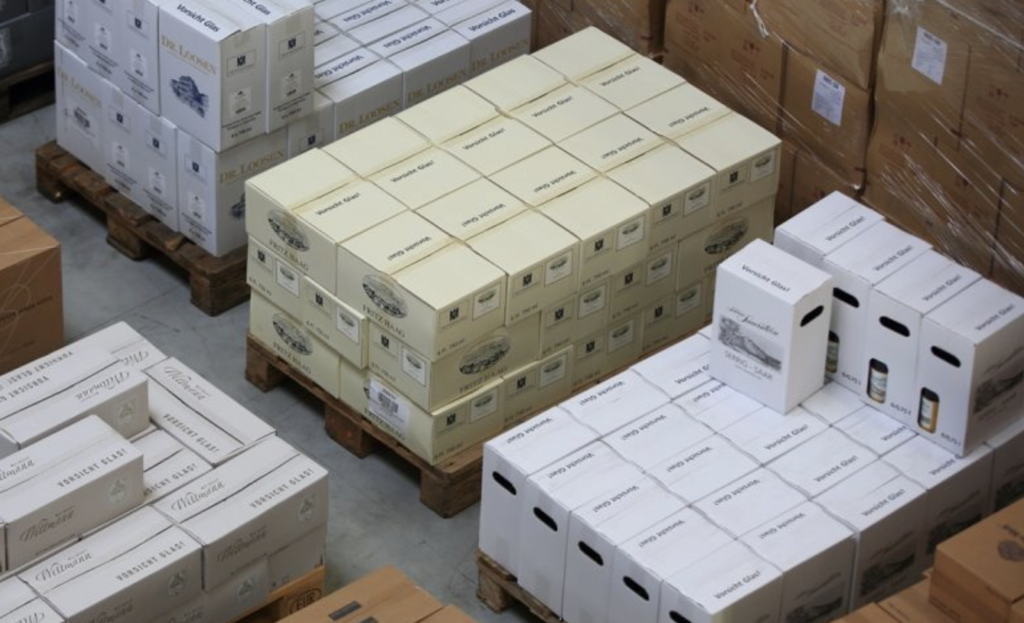
We worked out the zero base for a whole lot of customers and pitched it mainly at New World and Pak n’ Save because back in those days the owner-operators had a lot more influence over the range and what’s promoted and we could negotiate directly with the stores. The product was flying along, winning gold medals and was particularly good value, so they didn’t mind getting involved. We had ‘race tiers’ from one to four, and ‘tier four’ was if you did a certain number of pallets – 672 bottles per pallet. And in order to hit the top tier you had to do something like 22 pallets more than you’d done the previous year. So it’s thousands and thousands of bottles of wine. Now some of the big guys are already doing twenty!
The top prize was that we’d fly them and a buddy to San Francisco, put them up for five days, and give them an experience out on the water with Team New Zealand. So when this guy from Accolade came over, every grocery store he was going to was filled with huge displays. He did a bit of investigating and found out what it was. Now, the owners were an entrepreneurial bunch and were always open to – if the right offer came along – selling it. They had turned it into a bit of a machine. Close to a half a million cases, up from 50,000 ten years earlier. At that point they accounted for a little over half of the turnover for this business, but when they sold to a company backed by private equity, we could no longer say they were a family-owned business. So we terminated the agreement.
So, what we wouldn’t do again, is allow one brand to get that dominant in our portfolio, because the risk of losing it is too great. We exited that relationship in 2016, and it has taken us to now to get back to where we were then in terms of the size of the business. But we’ve done that by growing seven or eight brands into that space. We don’t any of our brands, so we’re only as good as our last sale. I personally run by a saying that “you’re only as good as you are tomorrow”. Pretty hard to live up to sometimes. Particularly in the last few years when it has been pretty turbulent.
WF: Talk me through what effects Covid had on the business?
RL: Basically, on the 20th March 2020, Mark and I watched TV and said “well all but two of our customers are about to shut…we’re screwed”. Which is what we thought, and initially that was the case. Only grocery stores were allowed to operate. But what we found out reasonably early on in the piece – because we do supply them, was that we were considered to be an essential service.
But one of the other reasons why wineries use distributors is because we carry their debt for them. We pay them, and we sell their wine to other people and we’re responsible for collecting that money. And what’s the day everyone’s debt is due? The 20th. What day did New Zealand shut down? The 20th. So we had a lot of money outstanding. How do you ring a customer who has just been told that they have to shut for an indefinite amount of time, and tell them that they have to pay their bill, and keep that relationship?
That was the single hardest thing to navigate through. Having those kind of conversations over the phone – because no-one was allowed to be face to face; and which we would always have face to face. We do ride that aspect of our business harder than most of our competitors, because we’re privately owned, and we rely on cashflow. This business model doesn’t work if people don’t pay us – so we’re pretty strict with that. That was the hardest thing. But within 24 hours we’d worked out how we were going to operate. How we were going to liquidate some stock that we already owned, to hedge against that debt. And a strategy for when those places re-opened and what we would offer them.
Then I set my team a task – because they were all at home going “WTF” like everyone else was. ‘we can operate – you figure out what you can do to help your customers’. Turn your brain on and come back to me? What we did for a lot of our key online customers, to keep them connected with their regular customer base, was to tell them “I want you to write out one recipe and scan it back to me” And they were like “What?” It started in Wellington with one of our guys – he collected six, and he thought “What wine of ours would you match that with?” So the guys at Monsoon Poon said ‘Bang Bang Chicken with Millton Chenin Blanc’. Went to Capitol, went to Charley Noble, Boulcott street – collated it all – and then they all banged it out to their databases… “Hi guys, we’re at home, you’re at home – but go to the Grocery Store and here’s a really simple way of cooking your favourite dish that you’re missing, and click this link for the wine”.
Now we didn’t have our own website up and running at that point. It was still in development. That was the other thing we decided to press ahead with; within about three hours of hearing the announcement. It was “What money are we going to stop spending, and what money are we going to spend?” And website development was definitely on. But we had this link, and we’d then send the mixed six-pack of those wines to that consumer’s home, and of course we sold it to them at a retail price, rather than what they pay for it in the restaurant. It kept the restaurant connected and it gave our sales team something to do.

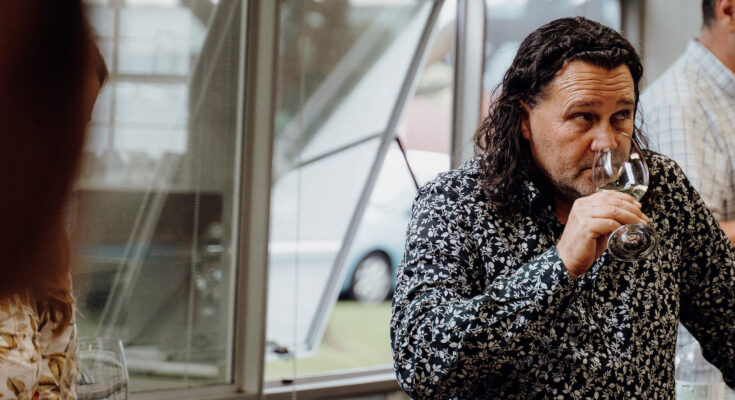
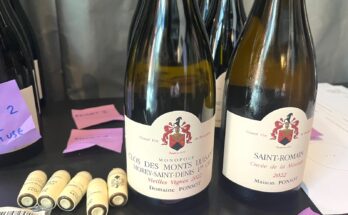
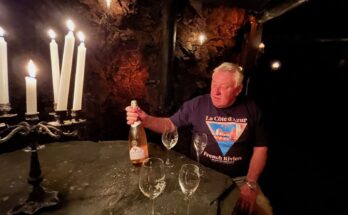

Thanks for this David. Ric was a great mate and will be sorely missed
Thank you for writing such a timely and beautifully created article . I would never see this – but somehow I did – and it has comforted me with Rics words- he certainly was an industry icon- I was so proud of him and all he created and the people he surrounded himself with and the story he told and people he helped. I will miss him forever. Never again will there be another Ric Little .. my days are empty. Forever loved and remembered for being so wonderful. Michelle Little ( Rics wife and best friend) x
Thanks David. Great interview with a great guy.
I always enjoyed any time spent with Ric, and he’s very much missed in the industry.